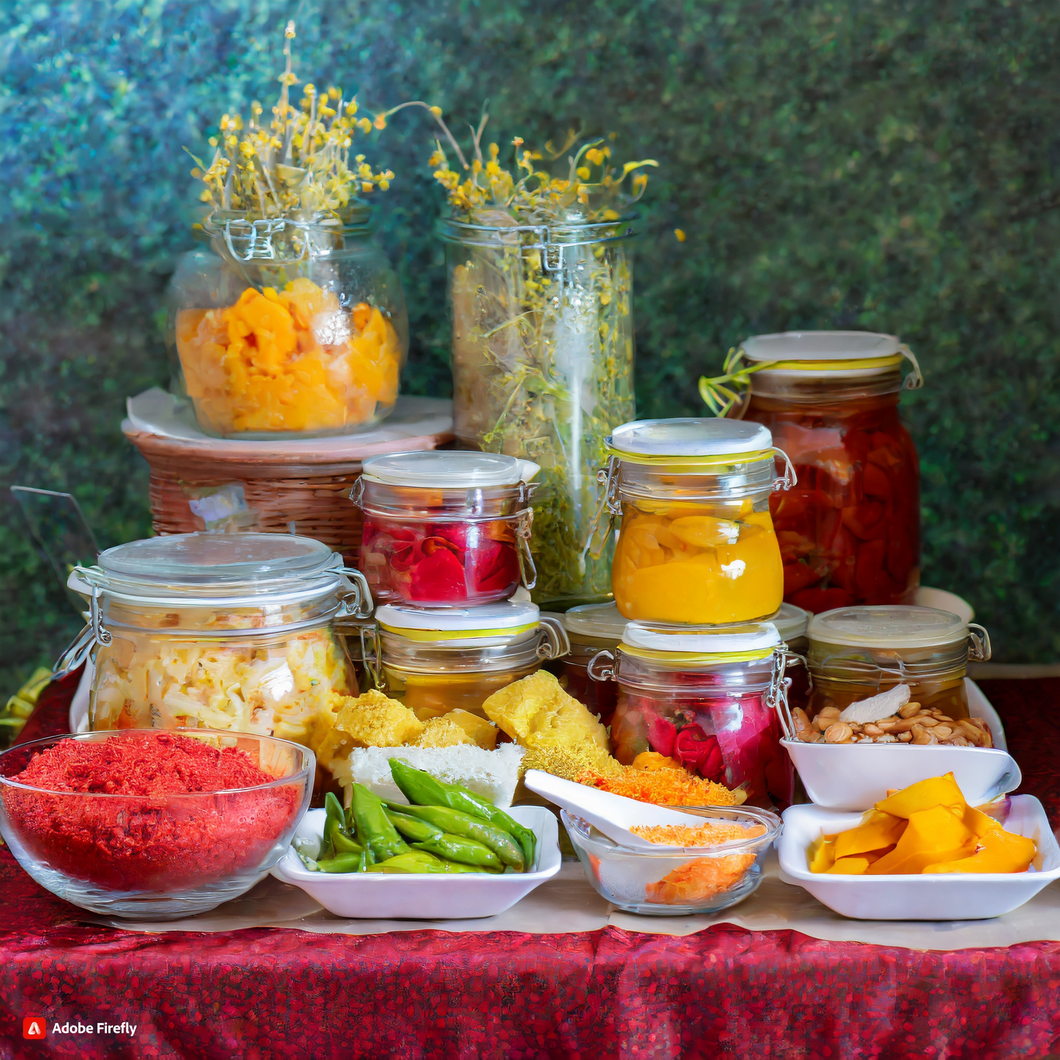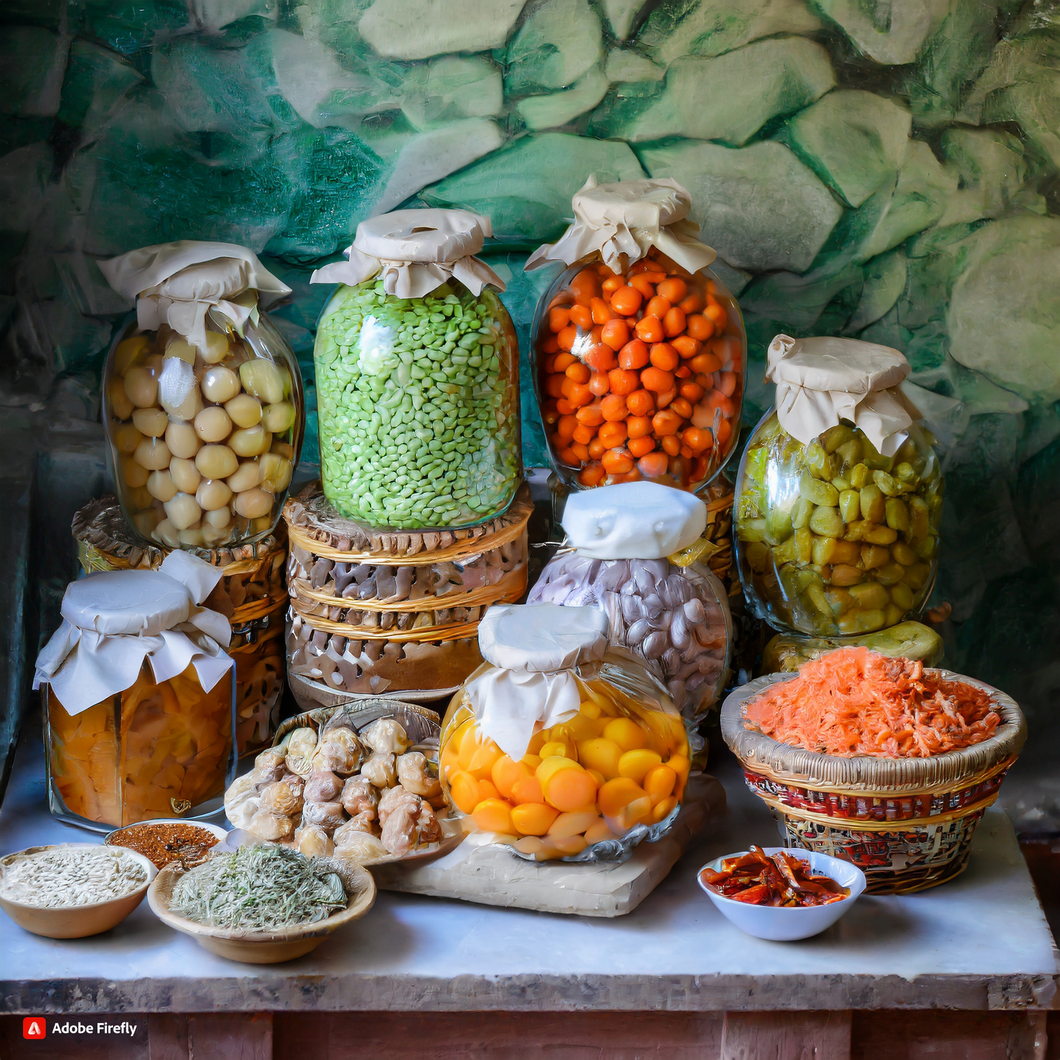Introduction
Food preservation has been a crucial aspect of human history, allowing societies to sustain themselves through harsh conditions and ensuring the availability of food during times of scarcity. From ancient techniques such as drying and salting to modern methods like canning and freezing, the preservation of food has played a significant role in shaping our past.

By exploring the historical impact of Food preservation, we can gain a deeper understanding of how this practice has influenced human societies and their development over time. In this essay, we will delve into the various methods of Food preservation and their significance in preserving the past.
The Evolution of Food Preservation Techniques: From Salt to Canning

Food preservation is a practice that has been around for centuries, with the goal of extending the shelf life of food and ensuring its availability during times of scarcity. From ancient civilizations to modern times, humans have been finding ways to preserve food in order to survive. In this article, we will take a journey through the evolution of Food preservation techniques, from the use of salt to the invention of canning. Read Recipes Weight Loss Salads.
The earliest form of Food preservation can be traced back to ancient civilizations, where people used salt to preserve meat and fish. The process of salting involves covering the food with a layer of salt, which draws out the moisture and creates an environment that is not conducive for bacterial growth. This method was widely used by the Egyptians, Greeks, and Romans, and it allowed them to store food for long periods of time without spoiling.
As time went on, people began to experiment with other methods of Food preservation. In the Middle Ages, the use of sugar as a preservative became popular. This was especially useful for preserving fruits, as the high sugar content prevented the growth of bacteria. However, this method was expensive and only accessible to the wealthy.
In the 18th century, the discovery of canning revolutionized the way food was preserved. The process, invented by Frenchman Nicolas Appert, involved sealing food in airtight containers and heating them to kill any bacteria. This method allowed food to be stored for long periods of time without spoiling, making it a game-changer for the food industry. Canning also played a crucial role in feeding soldiers during wars, as it provided them with a steady supply of food.
The 19th century saw the rise of refrigeration as a method of Food preservation. The invention of the refrigerator by German engineer Carl von Linde allowed food to be kept at low temperatures, slowing down the growth of bacteria and extending its shelf life. This method was particularly useful for preserving dairy products, meat, and vegetables.
In the 20th century, the use of preservatives in food became widespread. Chemical preservatives such as sodium nitrate and sodium benzoate were added to food to prevent spoilage and increase its shelf life. While this method was effective, it also raised concerns about the potential health risks of consuming these preservatives.

In recent years, there has been a shift towards more natural methods of Food preservation. This includes techniques such as pickling, fermenting, and drying. These methods have been used for centuries and are making a comeback due to their health benefits and minimal use of additives.
Pickling, which involves preserving food in a solution of vinegar, salt, and spices, has been used since ancient times. It not only extends the shelf life of food but also adds flavor and nutrients. Fermentation, on the other hand, involves the use of bacteria to break down sugars in food, creating an acidic environment that prevents the growth of harmful bacteria. This method is commonly used for preserving vegetables, such as sauerkraut and kimchi.
Drying is another ancient method of Food preservation that is still widely used today. It involves removing moisture from food, making it difficult for bacteria to grow. Dried fruits, vegetables, and meats have a longer shelf life and are a great source of nutrients. Read easy Healthy Lunch for Weight Loss.
In conclusion, the evolution of Food preservation techniques has played a significant role in shaping human history. From the use of salt to the invention of canning, humans have continuously found ways to preserve food and ensure its availability. While modern methods such as refrigeration and chemical preservatives have made Food preservation more convenient, there is a growing trend towards more natural and traditional methods. As we continue to explore and innovate, it is important to remember the impact that Food preservation has had on our past and its importance in shaping our future.
Preserving Cultural Heritage Through Traditional Food Preservation Methods
Food is not just a source of sustenance, but also a reflection of our culture and heritage. It is a way for us to connect with our past and preserve our traditions. In today’s fast-paced world, where convenience and efficiency are valued above all else, traditional Food preservation methods may seem outdated. However, these methods have played a crucial role in preserving our cultural heritage and should not be forgotten.
Food preservation has been practiced for centuries, with different cultures developing their own unique methods. These methods were not only used to extend the shelf life of food but also to enhance its flavor and nutritional value. In many cultures, Food preservation was a way of life, passed down from generation to generation.

One of the most well-known traditional Food preservation methods is fermentation. This process involves the conversion of sugars and carbohydrates in food into acids or alcohol by microorganisms. Fermentation not only preserves food but also adds a distinct flavor and texture to it. This method has been used for centuries in various cultures, from the Korean kimchi to the German sauerkraut.
Another traditional method is drying or dehydration. This method involves removing the moisture from food, making it less susceptible to spoilage. Dried fruits, meats, and vegetables have been a staple in many cultures, providing a source of nutrition during harsh winters or long journeys. In addition to preserving food, drying also concentrates its flavor, making it more intense and delicious.
Pickling is another popular method of Food preservation. This process involves immersing food in a solution of vinegar, salt, and spices, which creates an acidic environment that prevents the growth of bacteria. Pickling has been used in many cultures, from the Indian achar to the American pickles. It not only preserves food but also adds a tangy and flavorful twist to it.
Smoking is another traditional method that has been used for centuries to preserve food. This process involves exposing food to smoke from burning wood or other materials. The smoke acts as a preservative, inhibiting the growth of bacteria and adding a distinct smoky flavor to the food. Smoked meats, fish, and cheeses are popular examples of this preservation method. Read Bread Recipes.
These traditional Food preservation methods not only preserve food but also play a significant role in preserving cultural heritage. They are a reflection of the history, traditions, and values of a particular culture. For example, kimchi is not just a fermented cabbage dish in Korea, but it is deeply rooted in their culture and is considered a symbol of national identity.
In addition to preserving cultural heritage, traditional Food preservation methods also have environmental benefits. In today’s world, where food waste is a major issue, these methods can help reduce food waste by extending the shelf life of food. They also promote the use of locally sourced and seasonal ingredients, reducing the carbon footprint of food production and transportation.
Moreover, traditional Food preservation methods are often more sustainable and healthier than modern preservation techniques. They do not require the use of chemicals or preservatives, making the food more natural and nutritious. They also promote the use of whole foods, as opposed to processed and packaged foods, which are often high in preservatives and additives.
In conclusion, traditional Food preservation methods are not just about preserving food, but also about preserving our cultural heritage and promoting sustainability. These methods have stood the test of time and should not be forgotten in the face of modern convenience. So the next time you enjoy a jar of pickles or a slice of smoked meat, remember that you are not just tasting delicious food, but also a piece of history and tradition.
Q&A
Q: What are some common methods of Food preservation?
A: Some common methods of Food preservation include canning, freezing, drying, pickling, and smoking.
Conclusion
In conclusion, Food preservation has played a significant role in shaping our history and culture. From ancient civilizations to modern societies, the methods and techniques of preserving food have evolved and adapted to meet the needs of different time periods and regions. The impact of Food preservation can be seen in the development of trade routes, the rise of empires, and the survival of communities during times of scarcity.
It has also influenced the development of cuisines and culinary traditions, showcasing the importance of preserving food not just for survival, but also for cultural identity. As we continue to explore and innovate in the field of Food preservation, it is important to recognize and appreciate its historical significance and the role it has played in shaping our world.
Please follow us on linkedin. You can learn all best canadian food recipes you can check our Culinary 1TouchFood Youtube and Telegram 1TouchFood page. Don’t forget Fighting Obesity Magazine and Radio Cooking.

